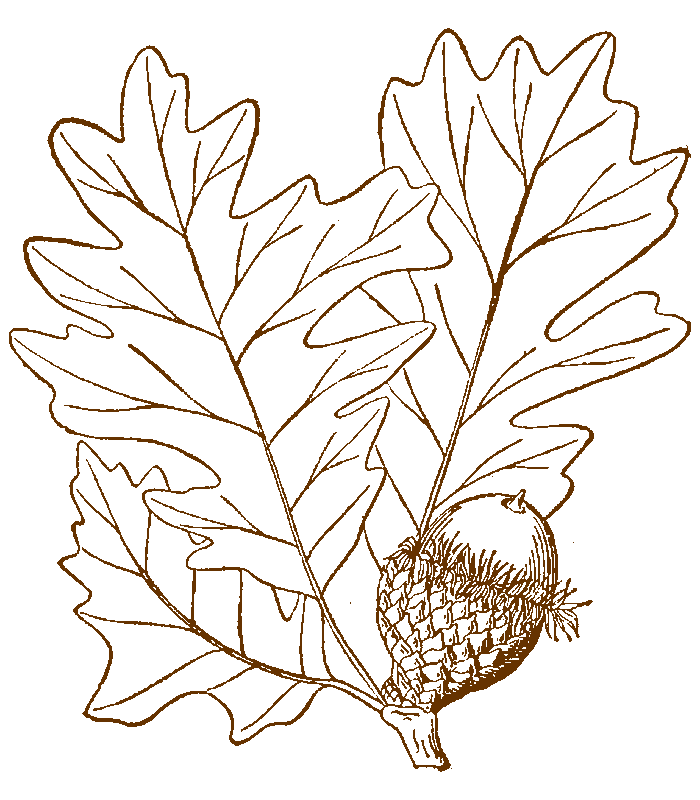Background
Setting
The three trees are all located in the vicinity of Crystal Lake Park, with two of them being in the County Fairground, as shown in the map below:

Crystal Lake Ash
A white ash, cut down because of Emerald Ash Borer, in March 2012, and photographed within 2-3 days of the cutting. Total diameter of tree at about 3 ft. about ground was 3 ft 3 inches. Total bark was 3 inches, so diameter of wood was 36 inches, radius was 18 inches.
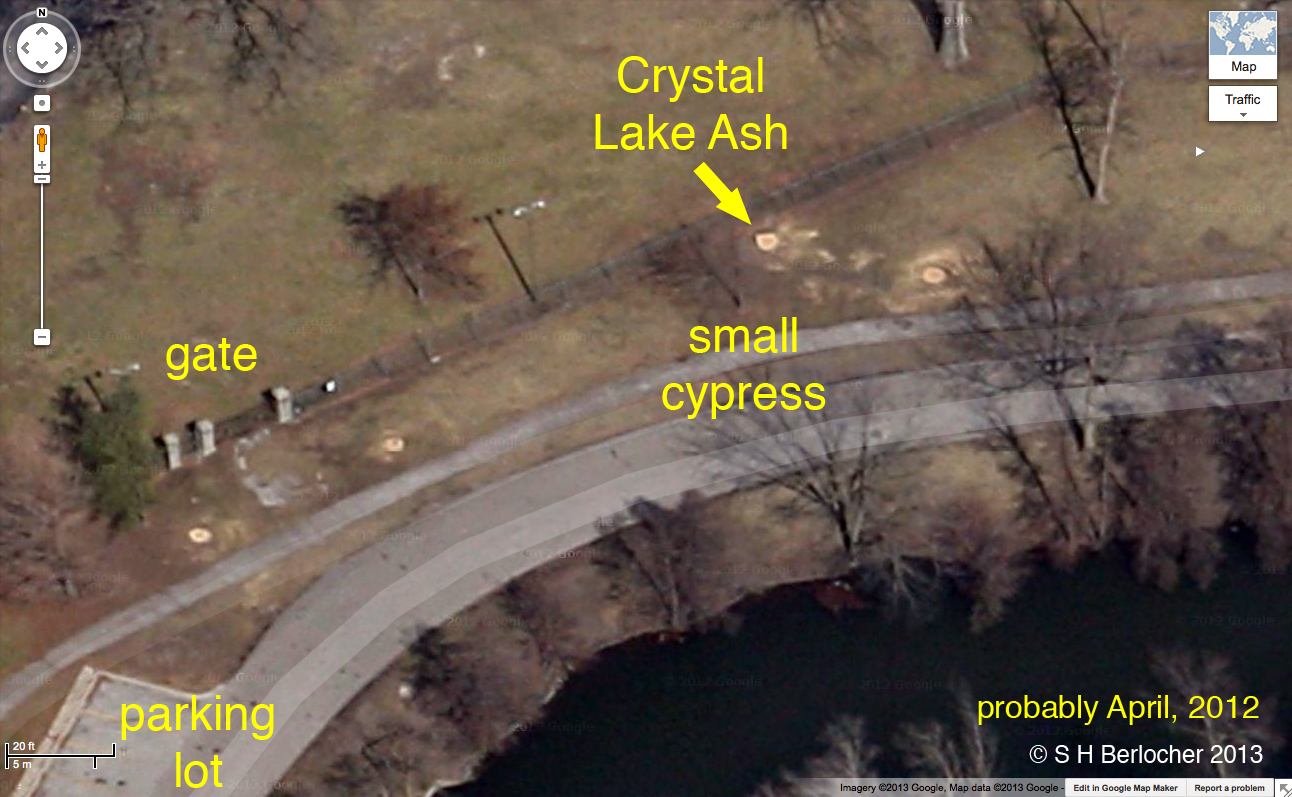
Google maps 45 degree angle photo of location of Crystal Lake Ash (Lake ash in photo). Note the pale "dot" where the stump is located. Note also that three other smaller ashes were cut at the same time.
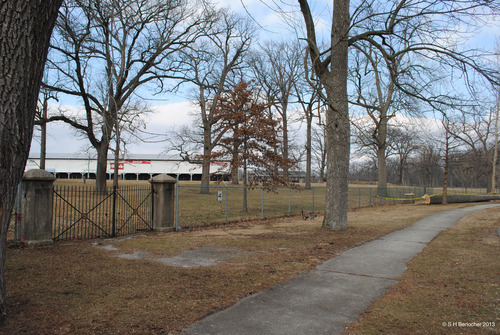
Photo of the same location as the Google maps, from gate. Note that at this time only the one large ash, far right, in distance, has been cut.
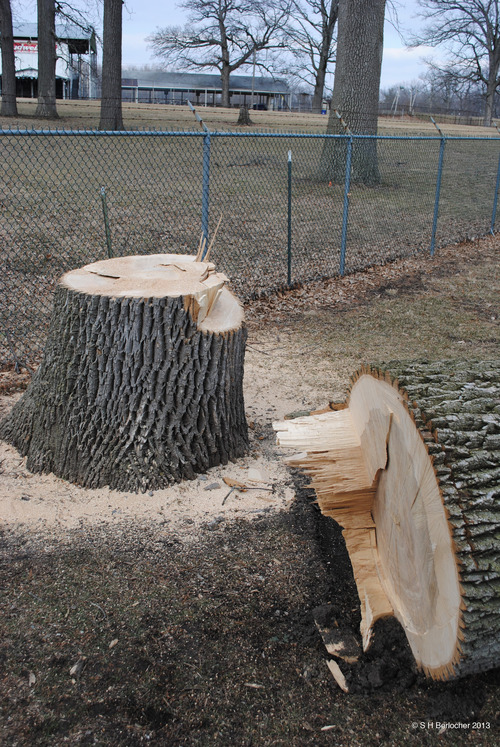
Cut stump and trunk of the Crystal Lake Ash. Note that the tree was sound throughout the trunk. Note also that the background tree between the right end of shed and the largest tree (ignoring the cut ash) is the Track Bur Oak.
Track Bur Oak
The stump was measured on March 23, 2013. It measured 3 feet 8 inches in diameter (including the bark), and the stump was 30 inches in height.
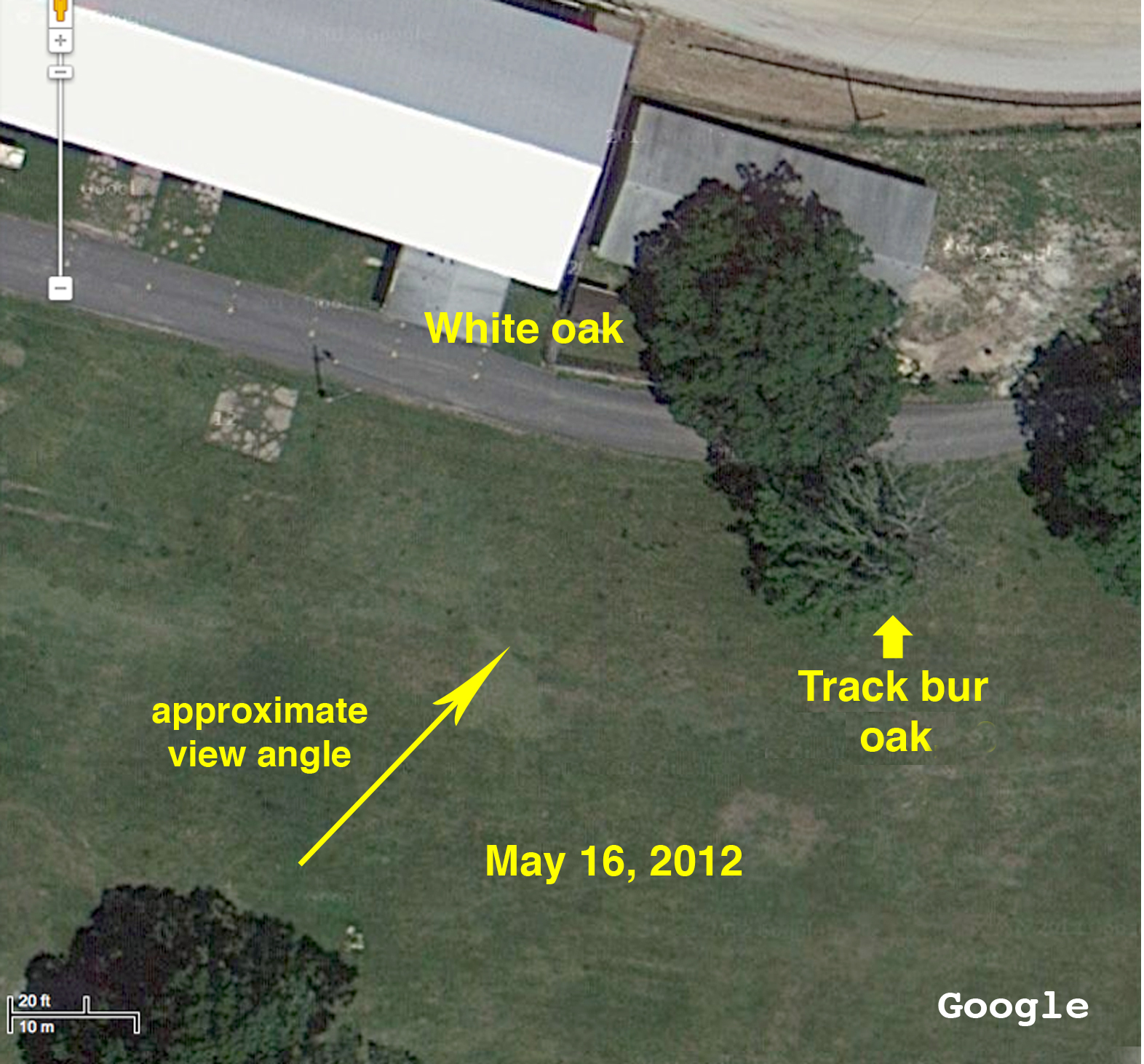
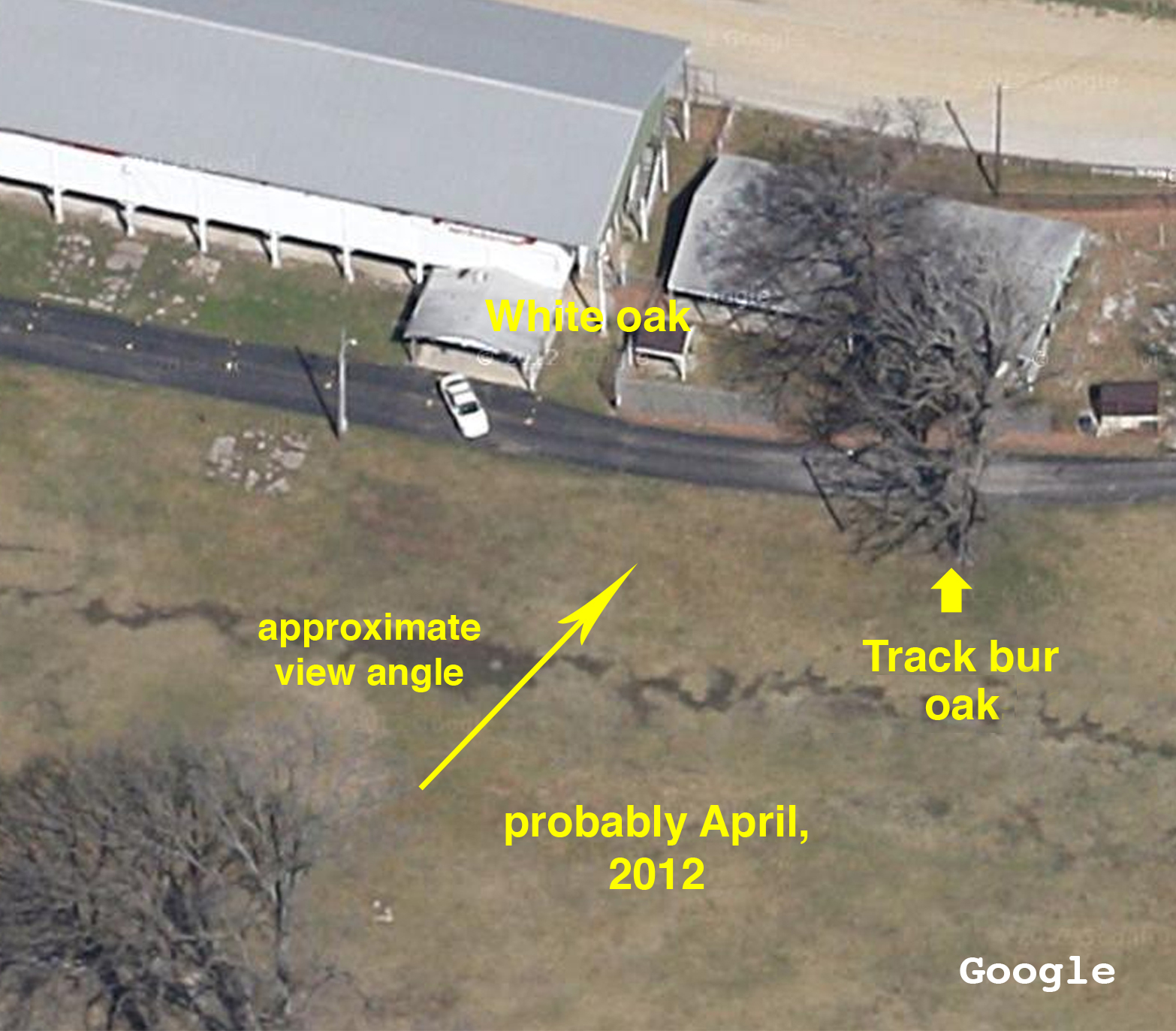
Google map shots of Track Bur Oak perhaps a month apart. (Both Google Map and Google Earth images were used, but dates can be obtained only from Google Earth, so the dates for the Google Map images were estimates, and are always so indicated with a "probably" or a "?". NOTE that the Track Bur Oak shows many dead limbs in the May 16, 2012 photo; the tree was eventually taken out because it was dying and would be dropping dead limbs on the large crowds at the Champaign County Fair.
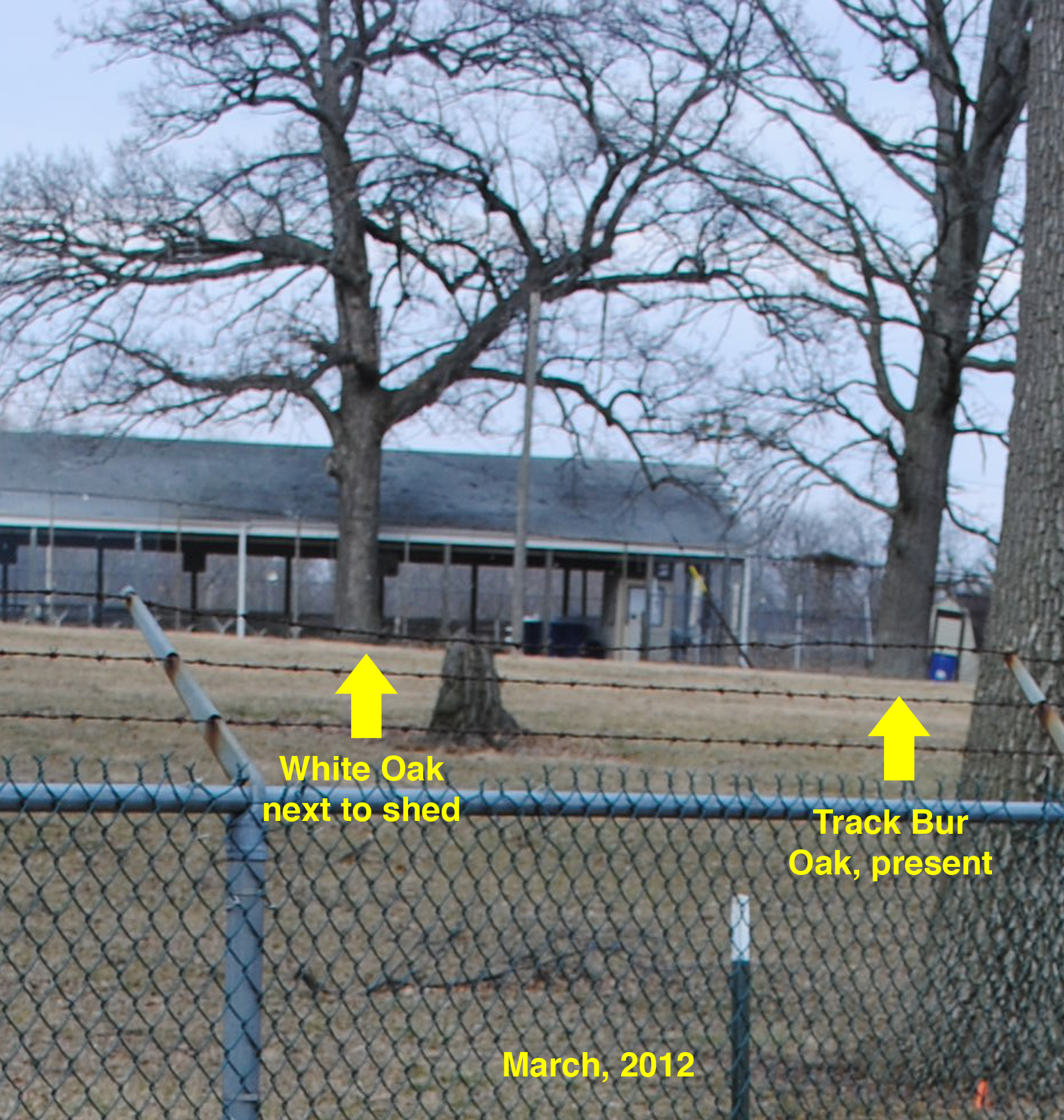
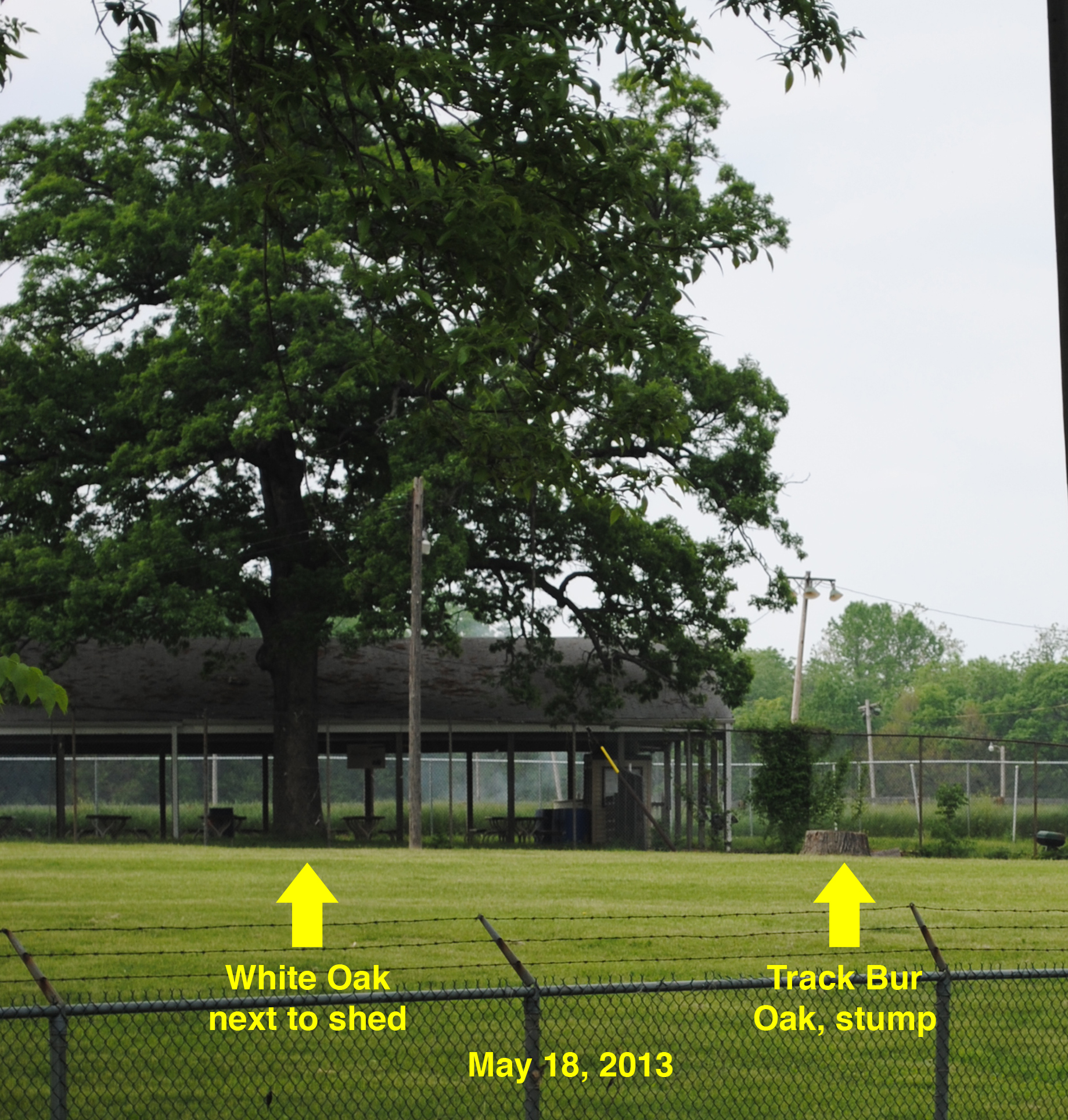
Photos showing the tree in March 2012 and the stump on May 18, 2013.
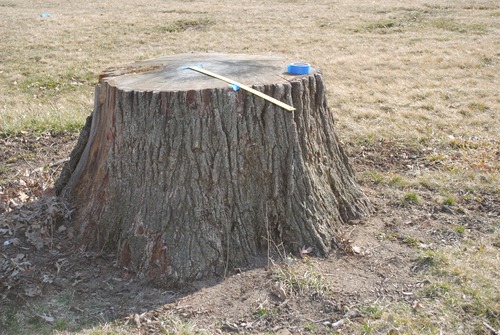
Photo from April 2013 of the stump of the Track Bur Oak, showing the ruler taped to the stump to provide a scale for the ring photos.
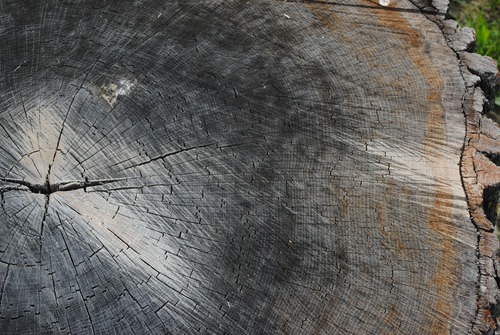
Photo from April 2013 of the top of the stump of the Track Bur Oak. The rings are clearly visible. The lighter areas at the center and the far right were sanded to allow more precise counting and measuring of the rings.
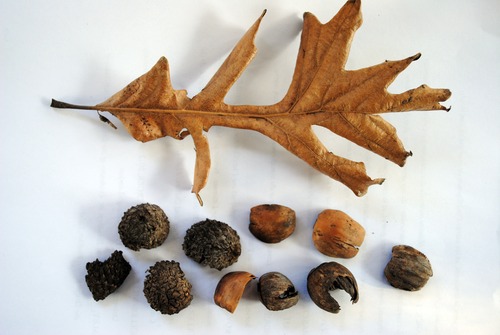
Because I did not see the leaves on the tree when it was alive, I collected acorn fragments, acorn caps, and leaves from the leaf litter at the base of the stump. The large acorns, leaf shape, and especially the "hairy" acorn caps are diagnostic for bur oak.
Entrance White Oak
The section from which rings were counted and measured was about 20 feet up the tree, and was 19 inches in diameter. The diameter at the base was estimated to be 26 inches. The tree was cut in the spring of 2012.
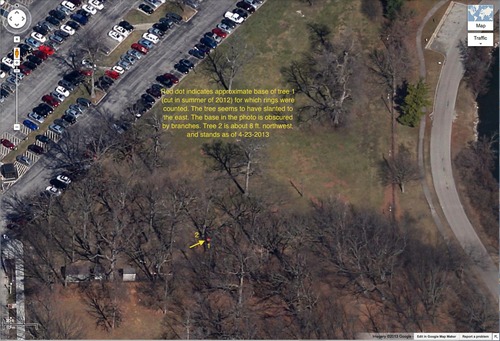
Google maps 45 degree shot of the area in which the Entrance White Oak occurred. An important fact is that this tree, unlike the other two trees in this study, was surrounded by other trees (all oaks) at the time it was cut down, and had been since at least 1940 (see Conclusions). Thus it was may not have ever experienced growth release like the other two trees. Also, as noted in the text on the photo above, it seems to have slanted and may have struggled to survive for some time. In the photo above tree 1 is the Entrance White Oak, and tree 2 is the tree just to the northwest of it, as shown in the photo below.
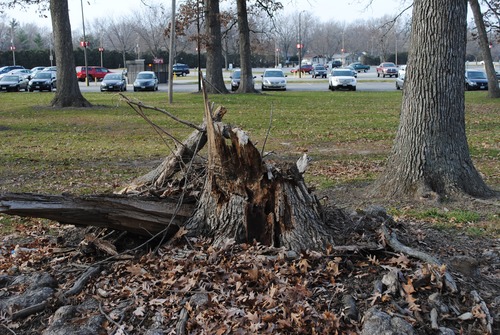
Photo of the stump (rotted on the inside, which is why it appears to have fallen over). The white oak 8 feet to the right of the stump is "tree 2" in the photo above.
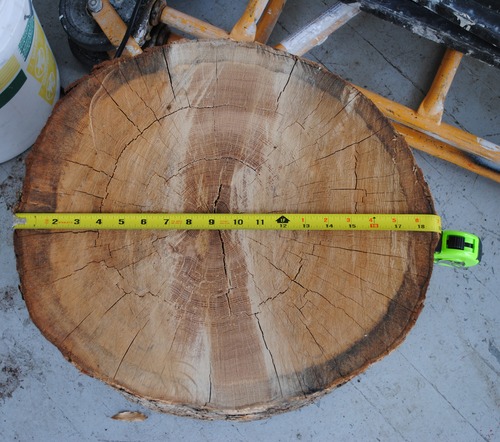
Cut section of the Entrance White Oak after sanding lanes from the center to the edge (both running to the top and bottom in this photo). The bottom sanded lane was photographed and measured. As described in the Excel file for this species, the tree is about 15 years older than the age indicated from the ring-count, because the measured section was about 20 feet from the ground.
Excel ring width file: (White Oak Ring Measurement)